PUBLICATIONS
Publications reflect TAPI’s commitment to research and scholarship of Indian textiles and art.
Books and exhibition catalogues, authored by renowned scholars, researchers, and museum curators showcase the highlights of TAPI’s textiles and art while offering insights and expertise into diverse areas of the collection.


WHEN INDIAN FLOWERS BLOOMED IN EUROPE: Masterworks of Indian Trade Textiles, 1600-1780, in the TAPI Collection
This book travels back to a time in the 17 th and 18 th centuries when European merchant companies discovered that a gold mine lay in profitably sourcing Indian textiles and selling them to their home markets.
Presented here are outstanding examples from the TAPI Collection: exquisite hand-drawn, dyed chintzes and garment pieces from India’s southeastern Coromandel Coast and intricately wrought embroideries from Bengal, Gujarat and the Deccan, commisioned for European patrons. As each of the textiles in the catalogue was destined for export, their presence in an Indian collection will be of interest to both Indian and international textile enthusiasts. Eminent art historian Ebeltje Hartkamp-Jonxis highlights her informative text with stunning examples from Dutch collections rarely seen before in English- language publications. Her authoritative explanations offer fresh insights into thirty masterpieces from the TAPI Collection. By Ebeltje Hartkamp-Jonxis (Author) Published by Niyogi Books, New Delhi ; Text and images TAPI Collection, or individually credited, Surat; 2022 ISBN: 978-93-91125-17-2 Size – 28.5 cm (H) x 22 cm (W); Hardcover with Jacket; 148 pages
WHEN INDIAN FLOWERS BLOOMED IN EUROPE: Masterworks of Indian Trade Textiles, 1600-1780, in the TAPI Collection
This book travels back to a time in the 17 th and 18 th centuries when European merchant companies discovered that a gold mine lay in profitably sourcing
Indian textiles and selling them to their home markets.
Presented here are outstanding examples from the TAPI Collection: exquisite hand-drawn, dyed chintzes and garment pieces from India’s southeastern Coromandel Coast and intricately wrought embroideries from Bengal, Gujarat and the Deccan, commisioned for European patrons. As each of the textiles in the catalogue was destined for export, their presence in an Indian collection will be of interest to both Indian and international textile enthusiasts.
Eminent art historian Ebeltje Hartkamp-Jonxis highlights her informative text with stunning examples from Dutch collections rarely seen before in English- language publications. Her authoritative explanations offer fresh insights into thirty masterpieces from the TAPI Collection.
By Ebeltje Hartkamp-Jonxis (Author)
Published by Niyogi Books, New Delhi ; Text and images TAPI Collection, or individually credited, Surat; 2022
ISBN: 978-93-91125-17-2
Size – 28.5 cm (H) x 22 cm (W);
Hardcover with Jacket; 148 pages
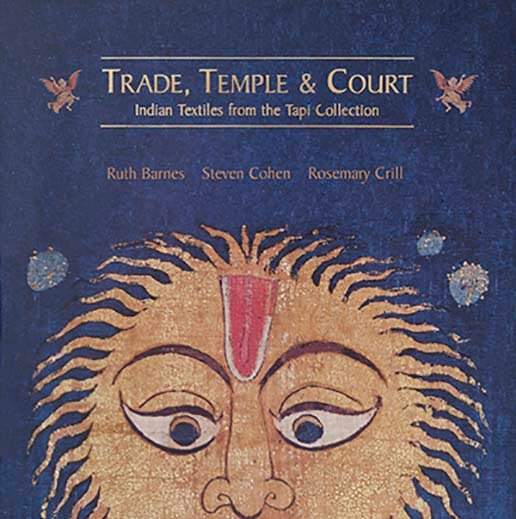
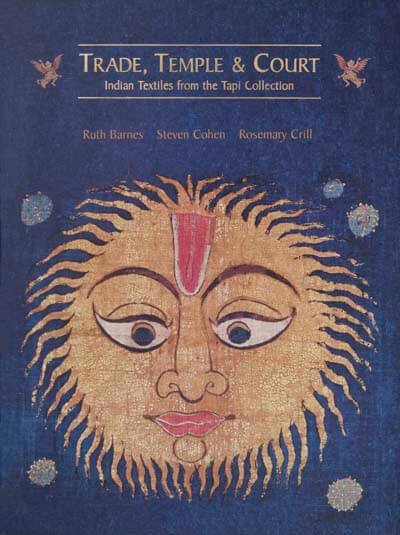
TRADE, TEMPLE & COURT: Indian Textiles from the TAPI Collection
Trade, Temple & Court: Indian textiles from the Tapi Collection introduces several of the most outstanding examples from this renowned private collection with detailed text, gatefold spreads, diagrams elucidating intricate structural and design elements and 240 lavish illustrations. Noted textile scholars, Ruth Barnes, Steven Cohen and Rosemary Crill bring fascinating insights to the realm of historical Indian textiles treasured, not only by courtiers and royalty but also markets spanning the globe- from South-east Asia to Europe.
By Rosemary Crill, Steven Cohen, Ruth Barnes (Authors)
Published by Garden Silk Mills Limited. Mumbai in association with the TAPI Collection, Surat, 2002.
ISBN: 81-7508-354-9
Size – 33.02 cm (H) x 25.7 cm (W);
Hardcover with Jacket; 386 pages

TRADE, TEMPLE & COURT: Indian Textiles from the TAPI Collection
Trade, Temple & Court: Indian textiles from the Tapi Collection introduces several of the most outstanding examples from this renowned private collection with detailed text, gatefold spreads, diagrams elucidating intricate structural and design elements and 240 lavish illustrations. Noted textile scholars, Ruth Barnes, Steven Cohen and Rosemary Crill bring fascinating insights to the realm of historical Indian textiles treasured, not only by courtiers and royalty but also markets spanning the globe- from South-east Asia to Europe.
By Rosemary Crill, Steven Cohen, Ruth Barnes (Authors)
Published by Garden Silk Mills Limited. Mumbai in association with the TAPI Collection, Surat, 2002.
ISBN: 81-7508-354-9
Size – 33.02 cm (H) x 25.7 cm (W);
Hardcover with Jacket; 386 pages


MASTERS OF THE CLOTH: Indian Textiles Traded to Distant Shores
Published to coincide with the exhibition of the same name in the National Museum, Delhi, this catalogue showcases a rare selection of Indian cloths, hardly known in the country of their origin but coveted in distant markets in the East and West. It introduces the reader to the astonishing diversity and history of these trade cloths and the remarkable ingenuity and skill of their makers. recreating the glory of Indian textiles from the 14 th to 19 th century.
Published by Garden Silk Mills Limited, Mumbai in association with the TAPI Collection, Surat, 2005.
This catalogue is published in conjunction with the exhibition ‘MASTERS OF THE CLOTH: Indian Textiles Traded to Distant Shores, TAPI collection” at the National Museum, New Delhi, November 10, 2005 to December 18, 2005.
Size – 27.8 cm (H) x 21 cm (W);
Paperback; 56 pages

MASTERS OF THE CLOTH: Indian Textiles Traded to Distant Shores
Published to coincide with the exhibition of the same name in the National Museum, Delhi, this catalogue showcases a rare selection of Indian cloths, hardly known in the country of their origin but coveted in distant markets in the East and West. It introduces the reader to the astonishing diversity and history of these trade cloths and the remarkable ingenuity and skill of their makers. recreating the glory of Indian textiles from the 14 th to 19 th century.
Published by Garden Silk Mills Limited, Mumbai in association with the TAPI Collection, Surat, 2005.
This catalogue is published in conjunction with the exhibition ‘MASTERS OF THE CLOTH: Indian Textiles Traded to Distant Shores, TAPI collection” at the National Museum, New Delhi, November 10, 2005 to December 18, 2005.
Size – 27.8 cm (H) x 21 cm (W);
Paperback; 56 pages
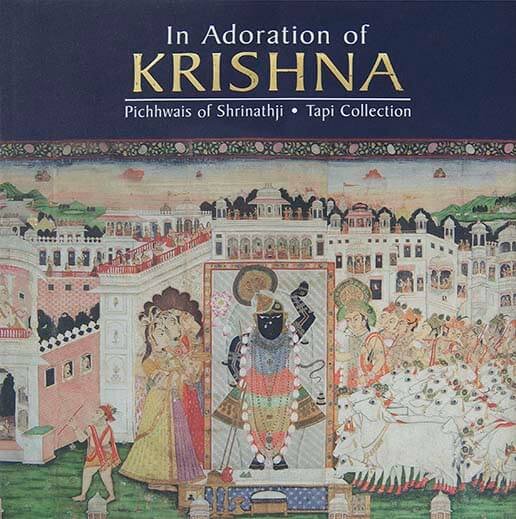

IN ADORATION OF KRISHNA: Pichhwais of Shrinathji
This publication unveils the wondrous world of pichhwais – the devotional textiles that hang behind the image of Krishna as Shrinathji. The book is not only a visual and aesthetic delight but also covers in depth, the background of the Pushti Marg sect, the place of the hangings in ritual practice and the vast range of mediums and techniques involved in pichhwai production. It is an invaluable resource for designers, art historians and any one interested in the decorative arts of Indian textiles in the context of spirituality.
By Kalyan Krishna, Kay Talwar (Authors)
Published by Garden Silk Mills Limited, Mumbai in association with the TAPI Collection, Surat, 2007.
ISBN: 978-81-905935-0-2
Size – 33 cm (H) x 26.8 cm (W);
Hardcover with Jacket; 200 pages

IN ADORATION OF KRISHNA: Pichhwais of Shrinathji
This publication unveils the wondrous world of pichhwais – the devotional textiles that hang behind the image of Krishna as Shrinathji. The book is not only a visual and aesthetic delight but also covers in depth, the background of the Pushti Marg sect, the place of the hangings in ritual practice and the vast range of mediums and techniques involved in pichhwai production. It is an invaluable resource for designers, art historians and any one interested in the decorative arts of Indian textiles in the context of spirituality.
By Kalyan Krishna, Kay Talwar (Authors)
Published by Garden Silk Mills Limited, Mumbai in association with the TAPI Collection, Surat, 2007.
ISBN: 978-81-905935-0-2
Size – 33 cm (H) x 26.8 cm (W);
Hardcover with Jacket; 200 pages
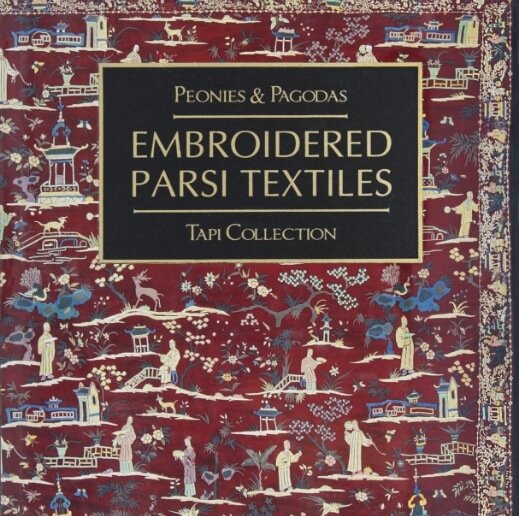
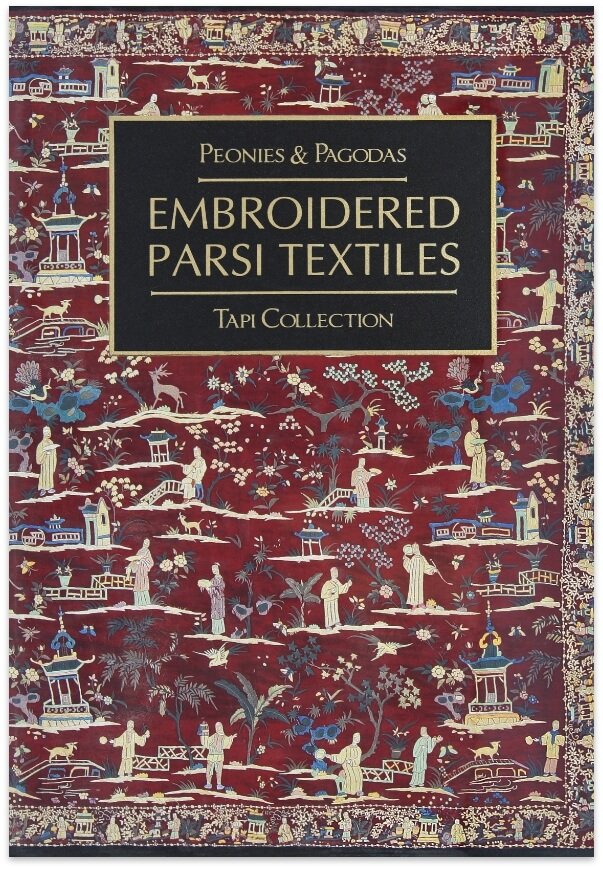
PEONIES & PAGODAS EMBROIDERED PARSI TEXTILES: TAPI COLLECTION
The stunningly varied embroidered textiles in this catalogue present a visual record of Parsi women’s and children’s clothing from the mid-19 th century. This first ever work dedicated to this genre of textiles explores the interplay between colonial commerce and cultural transmission through contributions by scholars from different disciplines. Illustrated with fine examples of the Tapi Collection, the volume is enlivened by portraits, rare lithographs and photographs form indigenous and international sources.
By Shilpa Shah, Tulsi Vatsal (Authors)
Published by Garden Silk Mills Limited, Mumbai in association with the TAPI Collection, Surat, 2010.
ISBN: 978-81-905935-1-9
Size – 28.8 cm (H) x 21 cm (W);
Hardcover with Jacket; 196 pages

PEONIES & PAGODAS EMBROIDERED PARSI TEXTILES: TAPI COLLECTION
The stunningly varied embroidered textiles in this catalogue present a visual record of Parsi women’s and children’s clothing from the mid-19 th century. This first ever work dedicated to this genre of textiles explores the interplay between colonial commerce and cultural transmission through contributions by scholars from different disciplines. Illustrated with fine examples of the Tapi Collection, the volume is enlivened by portraits, rare lithographs and photographs form indigenous and international sources.
By Shilpa Shah, Tulsi Vatsal (Authors)
Published by Garden Silk Mills Limited, Mumbai in association with the TAPI Collection, Surat, 2010.
ISBN: 978-81-905935-1-9
Size – 28.8 cm (H) x 21 cm (W);
Hardcover with Jacket; 196 pages


KASHMIR SHAWLS: The TAPI Collection
Kashmir Shawls is dedicated to the exceptional shawls in the Tapi Collection. The book is a milestone publication showcasing the amazing breadth of the collection with examples from the late 17 th century all the way up to the early 20 th century. Essays by the four authors convey in-depth research and original information and analysis that illuminates the understanding of Kashmir shawls like never before.
By Steven Cohen, Rosemary Crill, Monique Levi-Strauss, Jeffrey B Spurr (Authors)
Published by The Shoestring Publisher, Mumbai in association Garden Silk Mills Limited, and the TAPI Collection, Surat, 2012.
ISBN: 978-81-904720-5-0
Size – 32.5 cm (H) x 25 cm (W);
Hardcover with Jacket;
385 pages

KASHMIR SHAWLS: The TAPI Collection
Kashmir Shawls is dedicated to the exceptional shawls in the Tapi Collection. The book is a milestone publication showcasing the amazing breadth of the collection with examples from the late 17 th century all the way up to the early 20 th century. Essays by the four authors convey in-depth research and original information and analysis that illuminates the understanding of Kashmir shawls like never before.
By Steven Cohen, Rosemary Crill, Monique Levi-Strauss, Jeffrey B Spurr (Authors)
Published by The Shoestring Publisher, Mumbai in association Garden Silk Mills Limited, and the TAPI Collection, Surat, 2012.
ISBN: 978-81-904720-5-0
Size – 32.5 cm (H) x 25 cm (W);
Hardcover with Jacket;
385 pages
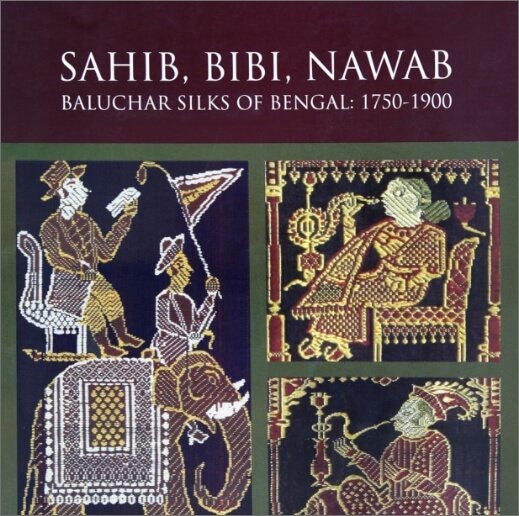

SAHIB, BIBI, NAWAB: Baluchar Silks of Bengal, 1750 – 1900
Sahib, Bibi, Nawab is a pioneering project of new scholarship and investigation into the origins, development, patronage, and demise of the Baluchar silks of Bengal. The catalogue essays, and contributions by Eva-Maria Rakob, Shilpa Shah and Tulsi Vatsal, assess the present state of research on Baluchar silks and identify questions that remain unanswered about this intriguing textile.
By Eva-Maria Rakob, Tulsi Vatsal, Shilpa Shah (Authors)
Published by the TAPI Collection, 2015
This catalogue is published in conjunction with the exhibition ‘Sahib, Bibi,Nawab: Baluchar Silks of Bengal, 1750-1900 ‘ held under the auspices of the Chhatrapati Shivaji Maharaj Vastu Sangrahalaya, Mumbai, Curator’s Gallery
December 11, 2014 to February 15, 2015
Size – 27.8 cm (H) x 20.5.cm (W);
Paperback; 100 pages

SAHIB, BIBI, NAWAB: Baluchar Silks of Bengal, 1750 – 1900
Sahib, Bibi, Nawab is a pioneering project of new scholarship and investigation into the origins, development, patronage, and demise of the Baluchar silks of Bengal. The catalogue essays, and contributions by Eva-Maria Rakob, Shilpa Shah and Tulsi Vatsal, assess the present state of research on Baluchar silks and identify questions that remain unanswered about this intriguing textile.
By Eva-Maria Rakob, Tulsi Vatsal, Shilpa Shah (Authors)
Published by the TAPI Collection, 2015
This catalogue is published in conjunction with the exhibition ‘Sahib, Bibi,Nawab: Baluchar Silks of Bengal, 1750-1900 ‘ held under the auspices of the Chhatrapati Shivaji Maharaj Vastu Sangrahalaya, Mumbai, Curator’s Gallery
December 11, 2014 to February 15, 2015
Size – 27.8 cm (H) x 20.5.cm (W);
Paperback; 100 pages
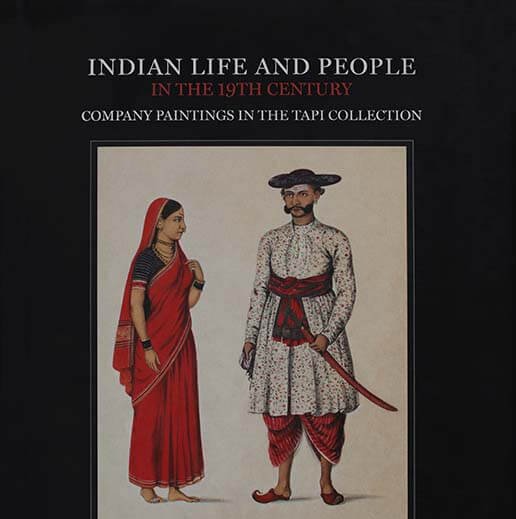
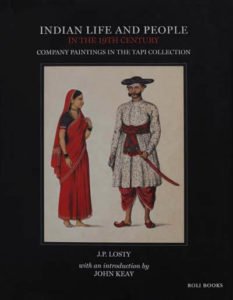
INDIAN LIFE AND PEOPLE IN THE 19 TH CENTURY: Company Paintings in the TAPI
Collection
Defining the distinct style of painting produced in India during the British period and influenced by European artistic norms, this catalogue of Company Painting in the TAPI Collection is a unique illustration of the social milieu prevailing in Indian in the nineteenth century, before the advent of photography. Tracing the origins and evolution of this genre of painting, the volume shines a fresh beam on subjects commissioned to be painted by officials of the East India Company, such as occupations, costumes, dress, bazaars, festivals and daily life of ordinary people, a world removed from the elite and princely environment that were the chosen subjects of Indian miniature artists.
By J.P. Losty (Author)
Published by Roli Books, New Delhi in association with the TAPI Collection, Surat, 2019
This catalogue is published in conjunction with the exhibition ‘Indian Life and People in the 19th century: Company Paintings in the TAPI & CSMVS Collections’ at the Chhatrapati Shivaji Maharaj Vastu Sangrahalaya, Mumbai, December 6, 2018 to January 7, 2019.
ISBN: 978-81-7436-874-4
Size – 27.5 cm (H) x 21.3 cm (W);
Hardcover; 200 pages

INDIAN LIFE AND PEOPLE IN THE 19 TH CENTURY: Company Paintings in the TAPI
Collection
Defining the distinct style of painting produced in India during the British period and influenced by European artistic norms, this catalogue of Company Painting in the TAPI Collection is a unique illustration of the social milieu prevailing in Indian in the nineteenth century, before the advent of photography. Tracing the origins and evolution of this genre of painting, the volume shines a fresh beam on subjects commissioned to be painted by officials of the East India Company, such as occupations, costumes, dress, bazaars, festivals and daily life of ordinary people, a world removed from the elite and princely environment that were the chosen subjects of Indian miniature artists.
By J.P. Losty (Author)
Published by Roli Books, New Delhi in association with the TAPI Collection, Surat, 2019
This catalogue is published in conjunction with the exhibition ‘Indian Life and People in the 19th century: Company Paintings in the TAPI & CSMVS Collections’ at the Chhatrapati Shivaji Maharaj Vastu Sangrahalaya, Mumbai, December 6, 2018 to January 7, 2019.
ISBN: 978-81-7436-874-4
Size – 27.5 cm (H) x 21.3 cm (W);
Hardcover; 200 pages
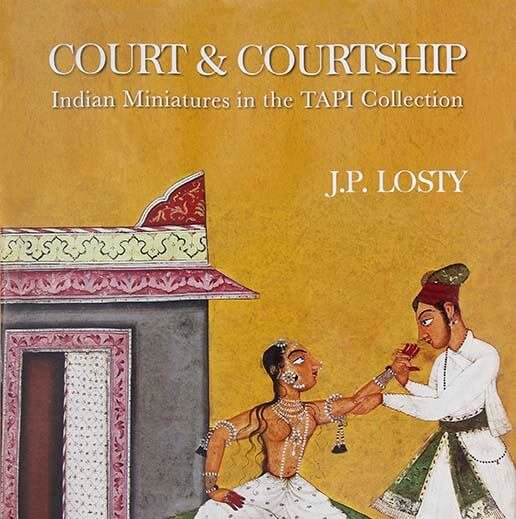

COURT & COURTSHIP: Indian Miniatures in the TAPI Collection
Court & Courtship: Indian Miniatures in the TAPI Collection is a study of Indian paintings in which the author J.P. Losty explores the well-trod highways and the lesser-known byways of miniature paintings. Splendid Mughal portraits and courtly pictures from the Deccan, Rajasthan, Central India, and the northern hills allow readers to savour a varied collection of Indian miniatures.
By J.P. Losty (Author)
Published by Niyogi Books, New Delhi; Text and Images The TAPI Collection, Surat, 2020.
ISBN: 978-93-89136-63-0
Size – 32.8 cm (H) x 25.3 cm (W);
Hardback with Jacket; 252 pages

COURT & COURTSHIP: Indian Miniatures in the TAPI Collection
Court & Courtship: Indian Miniatures in the TAPI Collection is a study of Indian paintings in which the author J.P. Losty explores the well-trod highways and the lesser-known byways of miniature paintings. Splendid Mughal portraits and courtly pictures from the Deccan, Rajasthan, Central India, and the northern hills allow readers to savour a varied collection of Indian miniatures.
By J.P. Losty (Author)
Published by Niyogi Books, New Delhi; Text and Images The TAPI Collection, Surat, 2020.
ISBN: 978-93-89136-63-0
Size – 32.8 cm (H) x 25.3 cm (W);
Hardback with Jacket; 252 pages
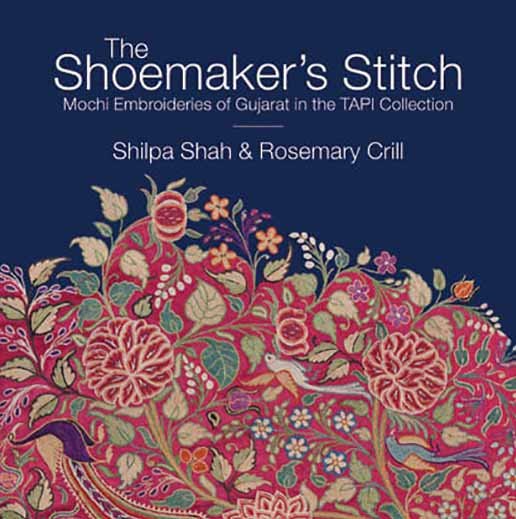
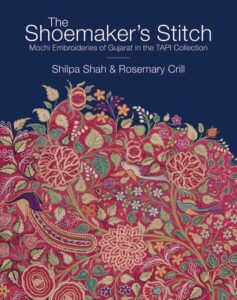
THE SHOEMAKER’S STITCH: Mochi Embroideries of Gujarat in the TAPI Collection
This book is the first to delve deeply into the history of chain stitch embroidery in India and the connections to the Mochi or shoemaker community. This catalogue of images displays a wide range of exquisite pieces from the Tapi Collection ranging from Jain manuscript covers to portraits, items of clothing, fans, and furnishings, spanning the 18 th to 20 th centuries. The accompanying essays also shed fresh light on chain-stitch embroideries in museums and private collections previously thought to be from the Mughal period as well as giving an account of the contemporary scene and the new directions and audiences for this embroidery worldwide.
By Shilpa Shah, Rosemary Crill (Authors)
Published by Niyogi Books, New Delhi ; Text and images TAPI Collection, or individually credited, Surat; 2022
ISBN: 978-93-91125-45-5
Size – 32.5 cm (H) x 25.4 cm (W);
Hardcover with Jacket; 220 pages

THE SHOEMAKER’S STITCH: Mochi Embroideries of Gujarat in the TAPI Collection
This book is the first to delve deeply into the history of chain stitch embroidery in India and the connections to the Mochi or shoemaker community. This catalogue of images displays a wide range of exquisite pieces from the Tapi Collection ranging from Jain manuscript covers to portraits, items of clothing, fans, and furnishings, spanning the 18 th to 20 th centuries. The accompanying essays also shed fresh light on chain-stitch embroideries in museums and private collections previously thought to be from the Mughal period as well as giving an account of the contemporary scene and the new directions and audiences for this embroidery worldwide.
By Shilpa Shah, Rosemary Crill (Authors)
Published by Niyogi Books, New Delhi ; Text and images TAPI Collection, or individually credited, Surat; 2022
ISBN: 978-93-91125-45-5
Size – 32.5 cm (H) x 25.4 cm (W);
Hardcover with Jacket; 220 pages
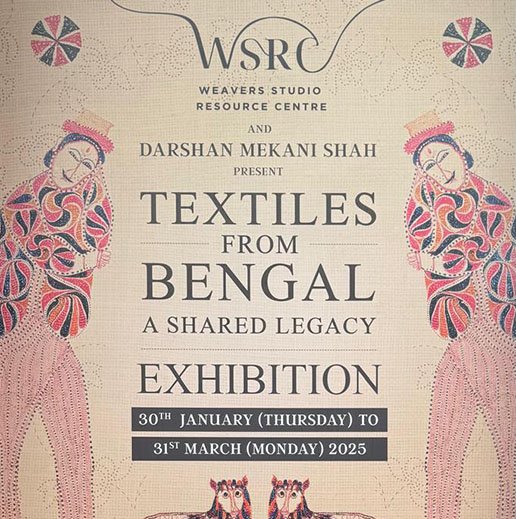
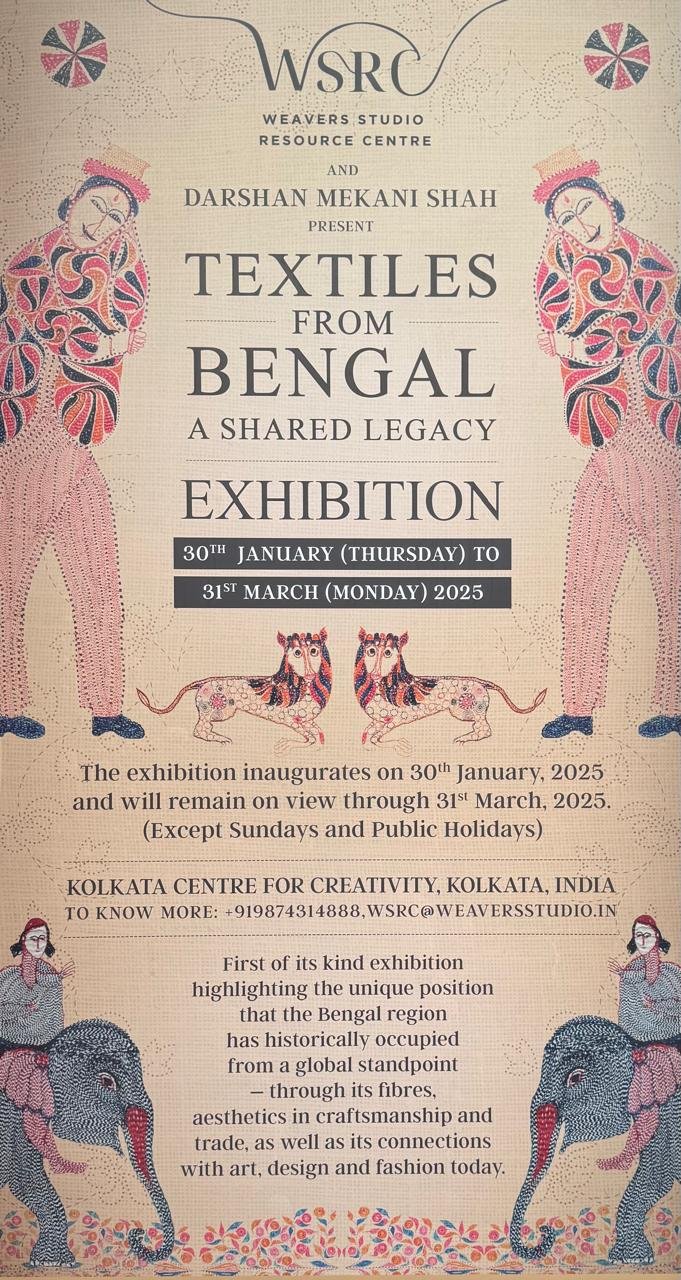
TEXTILES FROM BENGAL A SHARED LEGACY
This groundbreaking exhibition places hand-woven and hand-patterned textiles from India and Bangladesh at the forefront, showcasing the region’s unique historical significance on a global scale. It explores the legacy of an undivided Bengal, through its fibres, craftsmanship, and trade, highlighting their enduring influence on art, design, and fashion today.
On display are seventeen exceptional pieces from the TAPI Collection, presented alongside notable private and public collections both in India and abroad. Spanning nearly four centuries — from the 17th century to the present — the exhibition features iconic textiles from the TAPI collection, such as jamdani, Indo-Portuguese embroideries, kantha, haji rumal, Baluchars, namavalis, and patron textiles— pieces once specially commissioned for Bengal’s luxury market from renowned centres like Kashmir and Varanasi.

TEXTILES FROM BENGAL
A SHARED LEGACY
This groundbreaking exhibition places hand-woven and hand-patterned textiles from India and Bangladesh at the forefront, showcasing the region’s unique historical significance on a global scale. It explores the legacy of an undivided Bengal, through its fibres, craftsmanship, and trade, highlighting their enduring influence on art, design, and fashion today.
On display are seventeen exceptional pieces from the TAPI Collection, presented alongside notable private and public collections both in India and abroad. Spanning nearly four centuries — from the 17th century to the present — the exhibition features iconic textiles from the TAPI collection, such as jamdani, Indo-Portuguese embroideries, kantha, haji rumal, Baluchars, namavalis, and patron textiles— pieces once specially commissioned for Bengal’s luxury market from renowned centres like Kashmir and Varanasi.
Our publications are available for purchase on Amazon and other major online booksellers worldwide. You can also contact Art Book Centre, Ahmedabad https://www.
